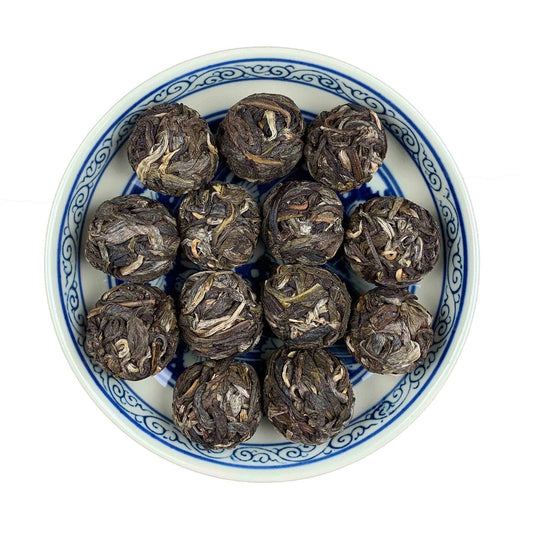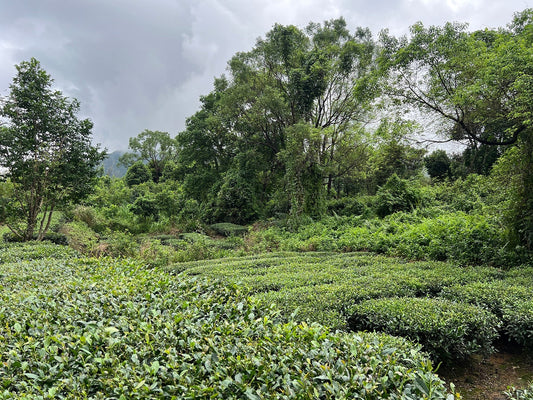Chinese Tea Culture: A 5,000-Year History of Types, Traditions & Influence
Tea is one of the most significant cultural treasures of ancient China, with a history spanning thousands of years. More than just a beverage, tea represents an art form, a philosophy, and a way of life.
In this comprehensive guide, we will explore:
- The origins and history of Chinese tea
- The development of tea culture across different dynasties
- The types and production techniques of ancient Chinese tea
- The customs and rituals surrounding tea drinking
- The philosophical and artistic significance of tea in Chinese history
By the end, you’ll understand why Chinese tea culture remains a timeless tradition and how ancient Chinese tea shaped the world.

The Origins of Chinese Tea: Myth and History
The Legend of Shen Nong
According to Chinese mythology, tea was discovered by Shen Nong (神农), the Divine Farmer, around 2737 BCE. While boiling water in the wild, tea leaves accidentally fell into his pot, releasing a delightful aroma. After tasting it, he found it refreshing and detoxifying. This legend marks the beginning of Chinese tea history.
Archaeological Evidence
Historical records and archaeological findings confirm that tea was first cultivated in southwestern China (Yunnan, Sichuan, and Guizhou). Excavations have uncovered 3,000-year-old tea leaves, proving that tea was used in ancient rituals and medicine.

The Evolution of Chinese Tea Culture Across Dynasties
1. Pre-Qin Period (Before 221 BCE) – Tea as Medicine
- Tea was primarily used for detoxification and healing.
- The "Shen Nong Ben Cao Jing" (Shen Nong’s Herbal Classic) mentions tea as a remedy for poisons.
2. Qin & Han Dynasties (221 BCE – 220 CE) – From Medicine to Beverage
- Tea transitioned from medicinal use to a daily drink.
- The Sichuan region became a major tea cultivation center.
- Early records in the "Classic of Tea" (Han Dynasty) describe tea as a luxury for nobles.

3. Wei, Jin, & Southern-Northern Dynasties (220–589 CE) – Tea as a Scholar’s Drink
- Scholars and poets embraced tea for its calming and meditative qualities.
- Tao Yuanming, a famous poet, wrote about tea in his works, linking it to a tranquil lifestyle.
4. Tang Dynasty (618–907 CE) – The Golden Age of Tea Culture
- Tea became a national drink, enjoyed by all social classes.
- Lu Yu (茶圣, the "Tea Sage") wrote the "Classic of Tea" (《茶经》), the world’s first book on tea cultivation, brewing, and appreciation.
- Tea trade flourished along the Silk Road, spreading Chinese tea culture globally.

5. Song Dynasty (960–1279 CE) – The Art of Tea Reaches New Heights
- Emperor Huizong wrote the "Treatise on Tea", elevating tea to an art form.
- Tea competitions (斗茶) became popular among scholars.
- Powdered tea (matcha-style) was widely consumed, later influencing Japanese tea ceremonies.
6. Ming & Qing Dynasties (1368–1912 CE) – Modern Tea Traditions Emerge
- Loose-leaf tea replaced compressed tea cakes, simplifying tea preparation.
- Oolong, black tea, and pu-erh became popular.
- Teahouses flourished, becoming social hubs for scholars and merchants.

Types of Ancient Chinese Tea
Ancient China developed six major tea categories, each with unique flavors and processing methods:
| Tea Type | Fermentation Level | Characteristics | Examples |
|---|---|---|---|
| Green Tea | Unfermented | Fresh, grassy, light | Longjing, Biluochun |
| Black Tea | Fully fermented | Rich, malty, bold | Keemun, Lapsang Souchong |
| Oolong Tea | Semi-fermented | Floral, complex | Tieguanyin, Dahongpao |
| White Tea | Lightly fermented | Delicate, sweet | Silver Needle, Shou Mei |
| Yellow Tea | Lightly fermented | Mellow, golden | Junshan Yinzhen |
| Post-fermented | Earthy, aged | Ripe Pu-erh, Raw Pu-erh |
These teas reflect the diversity and sophistication of ancient Chinese tea culture.
Ancient Tea Production Techniques
Traditional tea-making involved five key steps:
- Harvesting – Only the youngest leaves and buds were picked by hand.
- Withering – Leaves were dried naturally or indoors to reduce moisture.
- Rolling – Leaves were twisted to release juices and enhance flavor.
- Fermentation – Oxidation levels determined tea type (green, black, oolong).
- Drying/Firing – Final step to preserve tea leaves.
Each dynasty refined these methods, leading to the specialized tea varieties we enjoy today.

Tea-Drinking Customs in Ancient China
1. Tea Banquets (茶宴)
- Aristocrats and scholars hosted elegant tea gatherings with poetry and music.
- Lu Yu’s tea ceremonies set the standard for brewing techniques.
2. Scholar’s Tea (文人茶)
- Literati used tea to inspire creativity in calligraphy and painting.
- "Tea and Zen" (茶禅一味) philosophy linked tea to meditation.
3. Imperial Tea Tributes (贡茶)
- The finest teas were sent to the emperor as tribute.
- Legends say Da Hong Pao's mother trees were protected by imperial decree, their rare leaves gifted only to the throne.
4. Tea in Daily Life
- Common people enjoyed tea in teahouses, which became social centers.
- "Gongfu Tea" (功夫茶) from Fujian emphasized precision brewing.
The Cultural & Philosophical Significance of Tea
1. Tea in Poetry & Literature
- Tang poets like Lu Tong wrote "Seven Bowls of Tea", praising tea’s spiritual effects.
- "Dream of the Red Chamber" described elaborate tea rituals in noble families.
2. Tea in Religion
- Buddhist monks drank tea to stay alert during meditation.
- Daoists believed tea promoted longevity and harmony with nature.
3. Tea and Chinese Philosophy
- Confucianism – Tea symbolized etiquette and respect.
- Daoism – Tea embodied simplicity and natural balance.

Conclusion: The Legacy of Ancient Chinese Tea
Chinese tea culture is a living tradition that continues to inspire millions worldwide. From its mythical origins with Shen Nong to the refined tea ceremonies of the Tang and Song dynasties, tea has been a symbol of wisdom, art, and harmony.
Today, Chinese tea history remains a testament to the country’s rich heritage. Whether you drink Da Hong Pao oolong, or aged Pu-erh, you’re experiencing a tradition that has endured for thousands of years.
Would you like to explore authentic ancient Chinese tea? Try brewing a cup using traditional methods and immerse yourself in this timeless culture!




